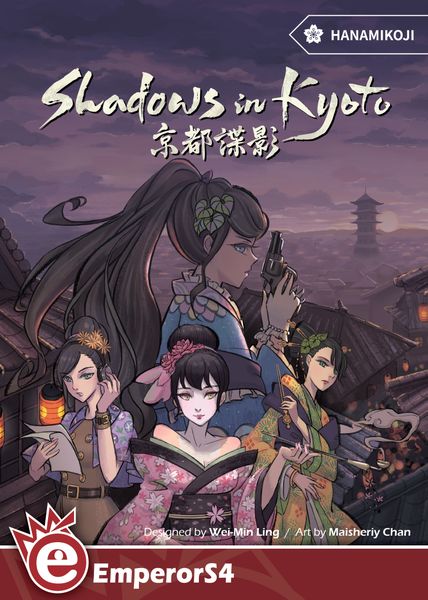Shadows in Kyoto (2017) Board Game
Shadows in Kyoto is a two-player board game that was released in in 2017. Designed by Wei-Min Ling and published by EmperorS4, it falls into the categories of Abstract Strategy, Bluffing, and Deduction. The game is set in Kyoto, Japan, where players take on the roles of spies trying to outwit each other and gather intelligence.
Game Components of Shadows in Kyoto
How To Setup Shadows in Kyoto
Players start by placing their six agents on the six starting locations on their side of the board. The markings for real or fake intelligence are hidden from the opponent. Each player has a hand of location cards and may have access to tactic and charisma cards.
Gameplay Mechanics and Game Objective
Player Experience
**Shadows in Kyoto** is known for its deductive and inductive complexity, making it engaging but also challenging. Players must use bluffing and strategic thinking to outmaneuver their opponent. The game is simple to learn but requires significant reasoning and strategy, especially in the initial placement of agents and subsequent gameplay.
Pros
Cons
Personal Thoughts on Shadows in Kyoto
**Shadows in Kyoto** is ideal for players who enjoy strategic abstract games with a strong focus on deduction and bluffing. It is particularly suited for those who appreciate games that require careful planning and logical reasoning. While it may not be the best fit for players seeking a more straightforward or simple experience, it is highly appreciated by those who enjoy the complexities of spy-craft and strategic gameplay.
We are supported by our audience. When you purchase through links on our site, we may earn an affiliate commission, at no extra cost for you. Learn more.

